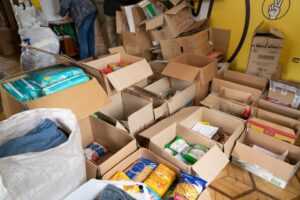Hoarding is a psychological condition in which the sufferer struggles to part with possessions. Oftentimes, this leads to the sufferer’s home becoming jam-packed with all kinds of things, resulting in unsanitary, dangerous, and sometimes even illegal living situations.
Unfortunately, cleaning up a hoarding situation isn’t as simple as renting a dumpster and throwing everything out. There are a number of mistakes that can be made during a hoarding cleanup. Not only can these mistakes jeopardize the physical state of the home but the psychological well-being of the homeowner as well.
Wondering what these mistakes might be? Then read on. Here are 5 hoarding cleanup mistakes to avoid for homeowners in Lake Mills.
1. Failing to Assess the Situation
Because hoarding situations include large accumulations of stuff, it can be difficult to understand what exactly that stuff entails. On the surface, it might just look like huge piles of books, for example.
However, under those books, there could be rotting food, dead animals, and a whole host of potentially dangerous substances.
This is why, before getting started on the hoarding cleaning itself, you need to take great care in assessing the situation. Survey the home and get a feel for the different substances that you’re going to be dealing with. Approach every new pile of stuff with caution, removing items slowly throughout the process.
Don’t just swoop in and start dumping things. Doing so could result in physically dangerous situations presenting themselves. Not to mention, it could have a negative impact on the homeowner’s psychological well-being.
2. Making Negative Comments About the Hoarder
Discovering a hoarding situation can be shocking. Dealing with it on a regular basis can make a person angry. However, you need to do everything in your power to keep yourself from making negative comments about the hoarder.
Don’t belittle the hoarder. Don’t make jokes about the situation. Don’t do anything that puts the hoarder on the spot or makes them feel insecure about themselves.
This is a very delicate time for the hoarder. They’re being confronted with the proverbial elephant in the room and are likely feeling extremely self-conscious about it. Even the most innocuous of negative comments can sting them, and perhaps even hinder the cleanup efforts.
During this time, it’s vital to be positive and supportive. Bite your tongue whenever you get angry and practice as much empathy as possible. Put yourself in the hoarder’s position and consider how you’d like to be treated.
3. Trashing Things Without Regard
Another common hoarding cleanup mistake is to trash things without regard. You shouldn’t just pick things up randomly and start throwing them away. You need to speak with the hoarder and discover which items they have the least amount of attachment to.
Once you have an idea of this, you can start tossing these items. This will help get the hoarder into the swing of things without risking any major pushback. Once the hoarder is into the swing of things, they’re much more likely to accept the disposal of more treasured items.
You should be mentally monitoring the behavior and reactions of the hoarder throughout the entire cleanup. If they make nervous comments about the things you’re currently throwing away, you should slow down and discuss those things with them. This can help give them a sense of control and can empower them to let go of those things willingly.
4. Failing to Break Things Down Into Portions
For a hoarder, the cleanout of their house is one of the most stress-inducing events they’ll ever have to go through. To you, it might just feel like you’re getting rid of a bunch of junk. To the hoarder, they’re losing memories and prized possessions.
The goal should be to make the cleanup as peaceful as possible for the hoarder. One way to accomplish this is to break the cleanup down into portions.
Don’t just tell the hoarder that you’re going to be throwing out the trash in their house. Create a plan detailing exactly which items you’re going to be getting rid of at a given time. Run the plan by the hoarder and allow them to get comfortable with it.
This should be a long and diligent process, not a quick and careless activity. Break the process down into steps and the hoarder is much more likely to remain comfortable throughout.
5. Allowing the Hoarder to Feel Alone
As you clean out a hoarder’s house, you’re bound to hear all sorts of comments about different items that are being thrown away. When the hoarder makes these comments, it’s typically because they feel uncomfortable parting with a specific item.
During these times, you need to make sure that you’re not allowing the hoarder to feel like they’re alone. You need to verbally empathize with the hoarder and discuss their mental pain. Doing so can help the hoarder to feel supported, and can strengthen their resolve in getting the task done.
Remember to put yourself in the hoarder’s shoes throughout this process. To you, this might just be the disposal of a bunch of trash. To the hoarder, this can be a hugely traumatic event.
Give them someone to lean on emotionally. Listen to what they have to say. Make them feel heard and they’re more likely to maintain a sense of control over the situation.
Need Help With Hoarding Cleanup in Lake Mills, WI?
Are you dealing with a hoarding situation in your life? Do you need hoarding cleanup help in Lake Mills, WI? ZBM, Inc. has you covered.
Our experienced team has cleaned up countless hoarding situations throughout Dodge and Jefferson Counties in Wisconsin. With the help of our high quality cleaning and maintenance services, your loved one’s home will look brand new, and without the sacrifice of major emotional turmoil.
Contact us now for a free estimate!


